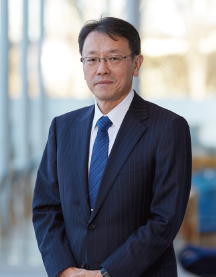Research Center for Enhancing Metropolitan Resilience
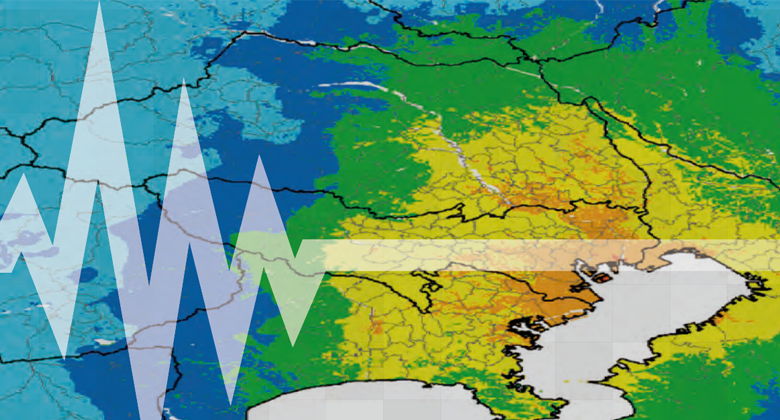
Concentrating both urban functions and population, the Tokyo Metropolitan area is the nerve center of Japan and the nucleus of its economic activities. It is vital to accurately evaluate disaster risks faced by the capital region such as the anticipated Tokyo Inland Earthquake and to equip the Tokyo Metropolitan area with comprehensive business continuity and response capabilities. To this end, it is first of all important to make a more resilient Tokyo Metropolitan area by all of the industry, government, academia, and private sectors working together.
Tokyo Metropolitan Resilience Project
Bridging social sciences, natural sciences and engineering, this project aims for industry, academia, government, and private sectors to work in an integrated manner to enhance preventative, predictive, and response capabilities for disasters.

NIED is committed to an all-Japan approach with researchers from companies, organizations and universities who share the same cause. A wealth of data is used and applied in research and disaster response.
*MEXT-subsidized project Project to formulate data platform hub (disaster resilience field) forR (Project to enhance comprehensive resilience for the Tokyo Metropolitan Region) – NIED is the central organization promoting this project.
(A) Social science fields “Aiming to enhance response capability”
Constructing a collaborative framework for utilization of data conducive to improving comprehensive resilience focused on the Tokyo Metropolitan area.
- (1) Identification of technical issues and consideration of data utilization to prevent damage from spreading and realize early recovery and reconstruction of urban functions
(2) Cooperation with private companies and related organizations for data utilization
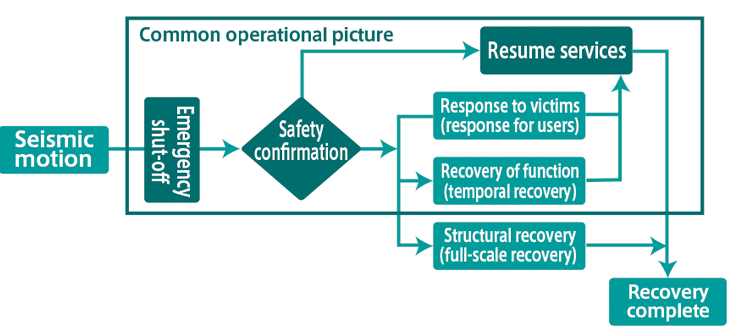
(B) Natural science field “Aiming to enhance predictive capability”
Collection and integration of ultra high-density ground motion data through public-private cooperation
- (1) Collection and integration of ultra high-density ground motion data through public-private cooperation
(2) Development of multi-data integration system
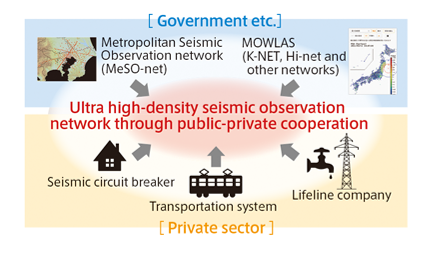
(C) Engineering field “Aiming to enhance disaster preparedness”
Collection/development of data regarding seismic safety margin of structures including non-structural components
- (1) Collection and consolidation of data related to seismic safety margin of buildings and structures, including non-structural components. Collection/development of sensing data related to earth’s crust, and construction
(2) Accumulation/provision of sensing data related to earth’s crust, and construction
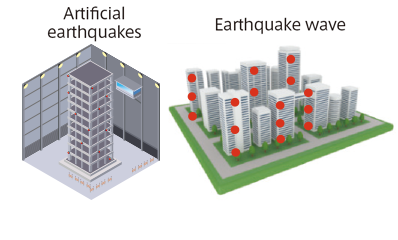
"DEKATSU": Creating Shared Value with Regarding Disasters
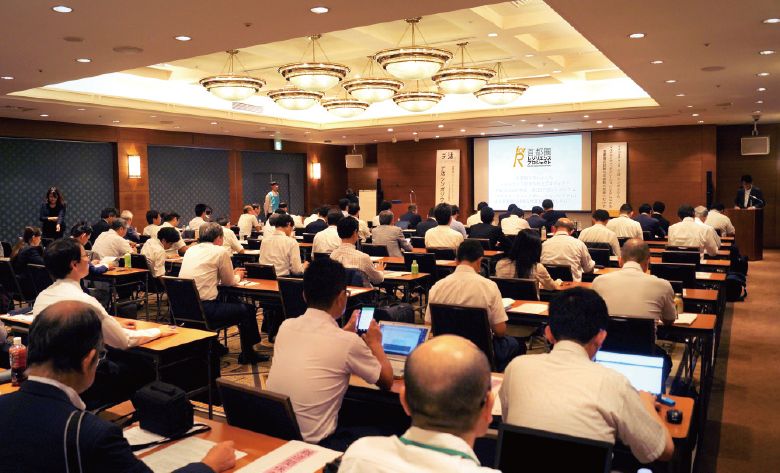
Companies and organizations will not engage in disaster resilience as part of so-called CSR (Corporate Social Responsibility) and will need to effect a paradigm shift towards creating CSV (Creating Shared Value). NIED runs “DEKATSU”, which is the Data Use and Application Council for Resilience. Through wide-ranging participation by industry, government, academia and private sectors, this council promotes the use and application of various kinds of data. Tokyo Gas, for example, has installed its own seismic sensors in approximately 4,000 locations centered on the capital region in order to be able to provide gas safely. By sharing these data through “DEKATSU”, we are one step closer to realizing ultra high-density seismic observation network through public/private sectors collaboration.
Establishing work procedure to improve business continuity capability
During normal circumstances (in the absence of disasters), it is important to implement work that arises during a disaster while continuing regular operations, in order to be able to keep damage and loss to the absolute minimum and enact a swift response and recovery when disasters strike. To realize business continuity, we analyze and deliberate past disaster cases and validate measures for establishing Standard Operating Procedure (SOP).

Toward realizing the collection of ultra high-density data through multi-data integration
With MeSO-net and MOWLAS at the foundation, by integrating data of observation devices held by private companies, we aim to grasp shaking in the Tokyo Metropolitan area to a high degree of precision and resolution, as if utilizing one singular observation network.
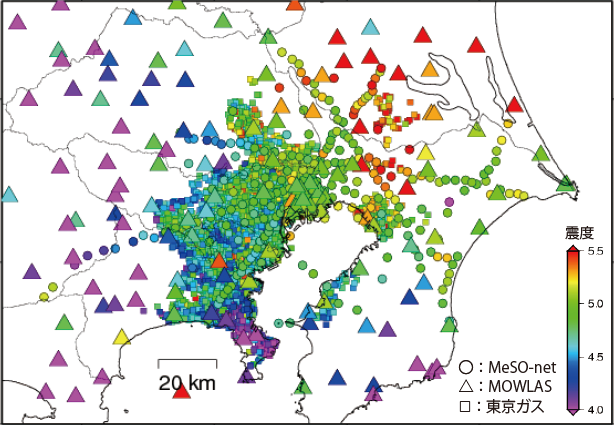
Using E-Defense to collect data in regard to safety margin to collapse
We implement shaking experiments on 3-story wooden house, fitted with conventional underground piping. With the aim of ensuring the rapid recovery of urban functions during major earthquakes, we conduct functional verification of structures including non-structural components such as the ceiling and other fixtures, while also collecting and developing data that are vital for individual disaster resilience behavior.
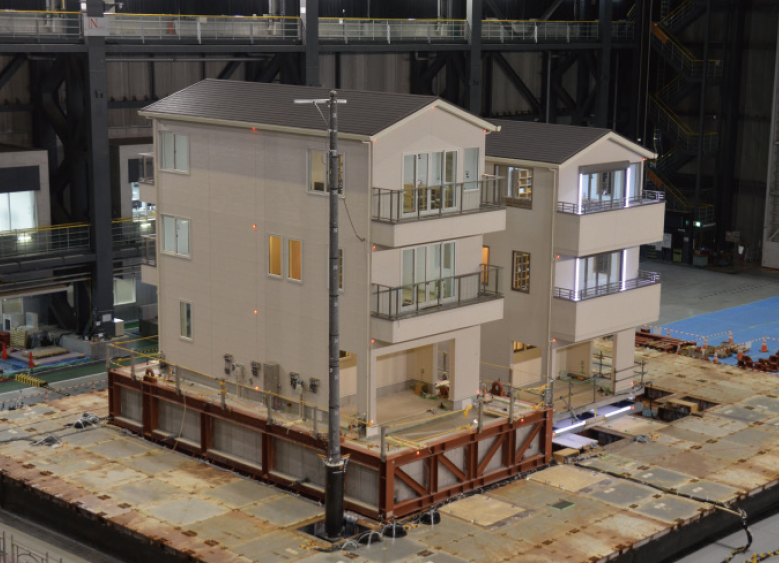
Designing a system where various initiatives including“DEKATSU”can be interlinked to actual disaster risk reduction behavior
Director-General HIRATA, NaoshiThere are still not many institutes that combine research into social/natural sciences and engineering to ascertain what kind of disasters occur and how society reacts when an earthquake occurs. In 2018 Osaka Earthquake, more than half of the approx. 120,000 elevators in the four prefectures of the Kinki region stopped, and it was 4 days until all of them were restored. In light of the anticipated Tokyo Inland Earthquake, it is a pressing task to consider methods for keeping such damage to the minimum. First of all, it is important to build up successful implementation examples one by one for new initiatives such as “DEKATSU”. Over the next 3, 5 years I intend to work toward the materialization of a disaster risk reduction system that will continue into the future.
